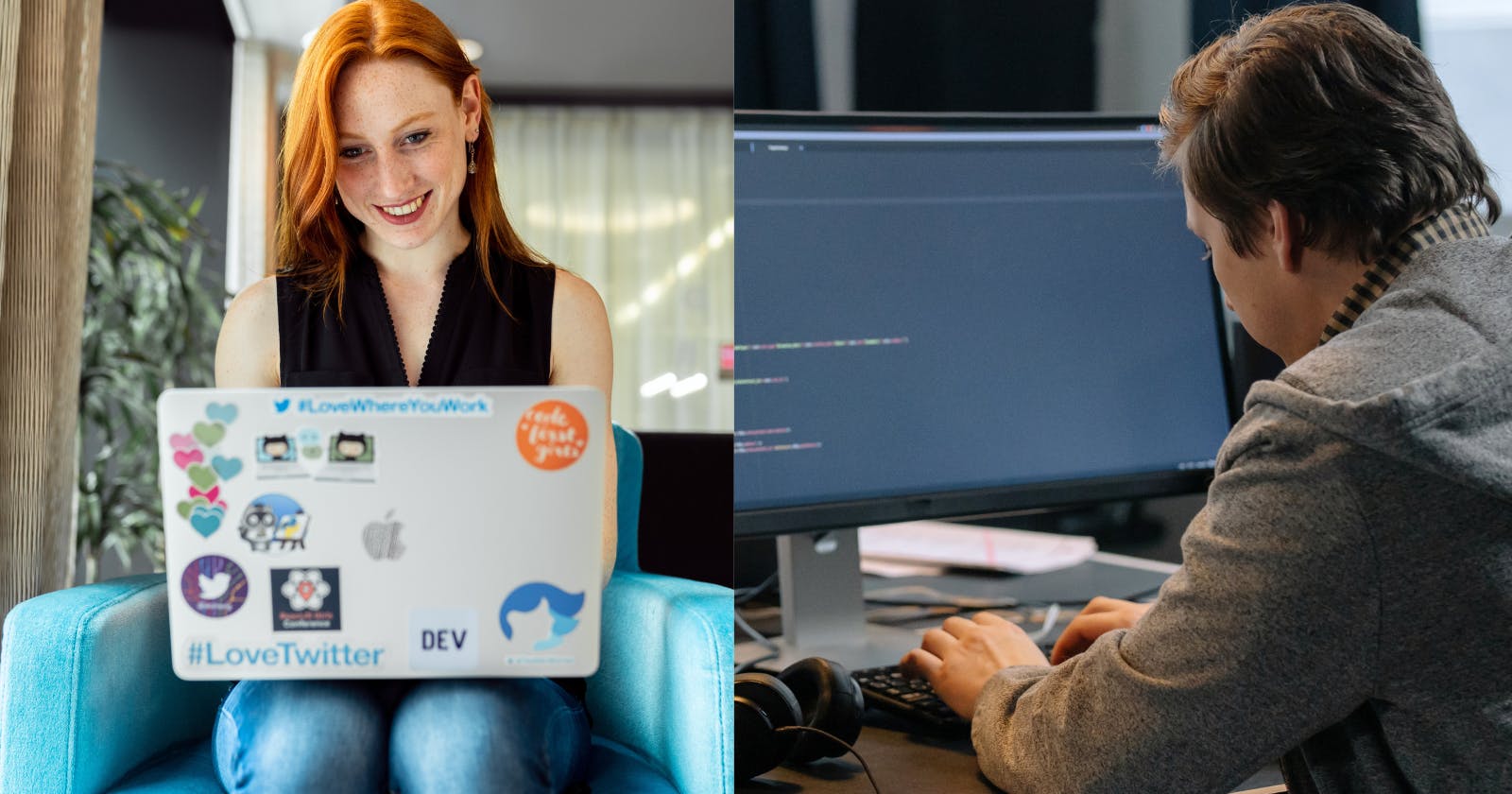Oftentimes people are confused about the difference between Frontend and Backend, or in some cases, some people know the difference but are confused about which track to go for first. In this article, I will try my very best to explain the difference between both tracks and the qualities that should inform your decision of going for one over the other. I will also let you into what you should expect when you go for any and the time it might likely take to learn anyone you eventually decide to go for.
What is Frontend
Frontend refers to the part of an application, software, or website that the users see. This is the user interface; which is the part the user relates to and interacts with.
The front end is sometimes referred to as the presentation layer.
what is back-end
the backend is the part of the software or website that users usually don't see. the backend deals with the Logic and functions that users do not need to relate or interact with when they use the platform.
An analogy of frontend and backend:
Imagine a restaurant, when you visit a restaurant, you are met by the waiter or waitress, now picture the waiter or waitress as the front-end developer who prepares the table, shows you to a suitable table, presents you with the menu, and serves you a sumptuous meal after you must have made your order. ( I hope somebody is not salivating already!). Consider every activity that happened here as the front-end activity. But then remember that the meal you were served was prepared by someone ( A cook or chef as the case may be), now think of the chef as the backend developer. He or she prepares the food. You don't even know or care to know how it was prepared, or what ingredient or recipe was used, all you care about is that you made an order and was served a satisfying meal. Now consider everything that happened in the kitchen and any other place the food had to pass through before it got to you as the backend activities.
What is full stack
Full stack is simply the combination of both frontend and backend. A full-stack developer can single-handedly build both the front and backend sides of an application or software.
Explaining with a web page
Imagine a user, Samsalt hears about a website, if the website interest him, the next thing he would do will be to navigate to the site, say www.examplesite.com when he types that URL (uniform resource locators) into his browser, examplesite server processes the request (backend) and return the page that was requested usually that would be the home page or landing page as the case may be.
The relationship between the backend and frontend is basically like that of the customer at the restaurant, the waiter, and the chef. you ( the user) make your order, the waiter or waitress (frontend) takes the order, sends it to the chef or cook (backend), and the order gets processed and sent back to the waiter for presentation.
Which should you learn first?
There is no standard order in which a person should learn first. I have seen developers who learn backend before frontend and some frontend developers who learn frontend before backend, it all depends on personality and preferences.
To help you make an informed decision, I will enumerate the roles and responsibilities of both tracks.
Roles of frontend developers
Front-end developers specialize in the delivery of quality user interface; that is everything the user sees and interacts with, they are responsible for the design and structure of every page in an application.
Other responsibilities of front-end developers include:
Deliver a simple and user-friendly interface
Code out pixel-perfect pages that align with the intended UI design.
Debug and fix front-end code
Ensure web pages are responsive(viewable and adaptable indifferent screen size).
Create features to improve the user experience.
Write high-quality reusable code
Collaborate with designers and quality assurance where available to improve speed and performance.
Write scalable front-end codes.
Roles of backend developers
Fixes bugs and errors relating to the backend
Interact with the database to ensure users have access to the correct data sets as, and when needed.
Create APIs( application programming interface) for frontend consumption (the handshake).
Build quality scalable and reusable code.
Ensure and maintain system security to avoid threats and possible hacks.
Communicate and collaborate with front-end developers for quality delivery.
Required skills for backend and frontend developers.
Frontend
HTML, CSS, and JavaScript
A JavaScript framework like React, Angular, and Vue
CSS processors like LESS, and SASS
Git Version Control
A Testing Framework like Jasmine, Jest, Mocha, and Cypress
Responsive design
Browser developer tools
Backend
Proficiency in a programming language like Ruby, Python, and Javascript(Node)
Good understanding of data structure and algorithms
A testing framework like Jest, Pytest, and RSpec
Proficient in the use of the command-line interface
Git version control
Knowledge of accessibility and security compliance
Database design and administration
If you are a logical thinker and love engaging and solving logical problems, you might want to go for the backend, if on the other hand, if you are good with colors and designs, and love solving complex design-related problems, you might want to go for the front-end. However, if you are still confused, don't overthink things, just start learning one already, after all, you can become a full stack.
What time it takes to learn any of the stacks totally depends on your level of assimilation, consistency, and practice.
Thank you for reading this article, I hope you got value for your time. If you did, share with your family, friends, and colleagues who you think may need this article. Happy coding!

